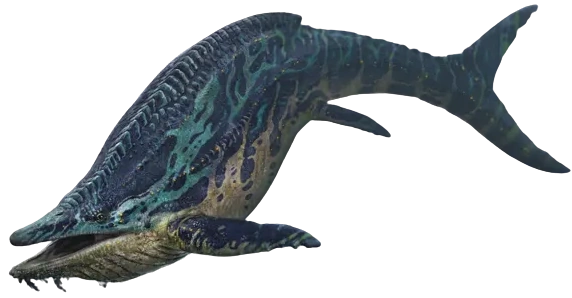Shastasaurus Entity ID
Real World Creature Description
Shastasaurus: The Colossal Ichthyosaur of the Triassic
When we think of colossal marine reptiles, our minds often drift to the infamous Plesiosaurs and Mosasaurs, popularized by modern culture and films. However, these pale in comparison to the size and grandeur of Shastasaurus, the largest marine reptile to have ever roamed the oceans. With a length reaching an astounding 65 feet (about 20 meters), this ichthyosaur, which thrived during the Late Triassic period, was a true titan of its time.
Introduction to Ichthyosaurs
Before we delve into the specifics of Shastasaurus, it's essential to understand ichthyosaurs in general. These were marine reptiles resembling a mix between a modern dolphin and a fish. Their streamlined bodies, large eyes, and strong tails made them agile and effective predators in the prehistoric seas. They are not related to dinosaurs, even though they lived during the same era.
A Glimpse into its World:
Shastasaurus was named after the Shasta County in California, where its fossils were initially discovered. Later, more fossils of this massive creature were unearthed in Nevada and British Columbia. Unlike its ichthyosaur cousins, which were often characterized by elongated snouts and teeth, Shastasaurus had a shorter snout and possibly lacked teeth. This suggests a different feeding mechanism and diet compared to other ichthyosaurs.
Physical Appearance
One of the most striking features of the Shastasaurus, aside from its size, was its short, toothless snout. This suggests that Shastasaurus might have employed suction feeding, similar to some modern-day whales. It could have preyed upon soft-bodied cephalopods, like squid, by sucking them into its massive mouth.
Its elongated body and robust flippers made it a strong swimmer, even if not the fastest in the ocean. It would have relied on its sheer size and strength to dominate its habitat.
Behavior and Lifestyle
While direct evidence of Shastasaurus behavior is scant, we can make educated assumptions based on its physical traits and the ecology of its time. It's likely that the Shastasaurus was a deep-diving marine reptile, given its massive size and the presence of large eyes, which would have been advantageous in low light conditions.
Significance in Paleontology
Shastasaurus, due to its unique morphology among ichthyosaurs, has sparked discussions and debates among paleontologists. Its discovery has provided insights into the diverse and varied evolutionary paths that marine reptiles took during the Triassic.
Additionally, the sheer size of the Shastasaurus has helped scientists appreciate the scale of marine life during the Triassic period. The oceans of this era were filled with a plethora of massive creatures, and the Shastasaurus stands as a testament to this age of giants.
Conclusion
Shastasaurus offers a window into a world long gone—a world dominated by massive marine reptiles, where evolution led to a beautiful variety of forms and sizes. As we continue to unearth more fossils and learn about these ancient titans, we gain a deeper appreciation of Earth's rich history and the ever-evolving tapestry of life.
Information

| Name | Shastasaurus |
| Diet | Carnivore |
| Category | Reptiles |
| DLC | The Center |
